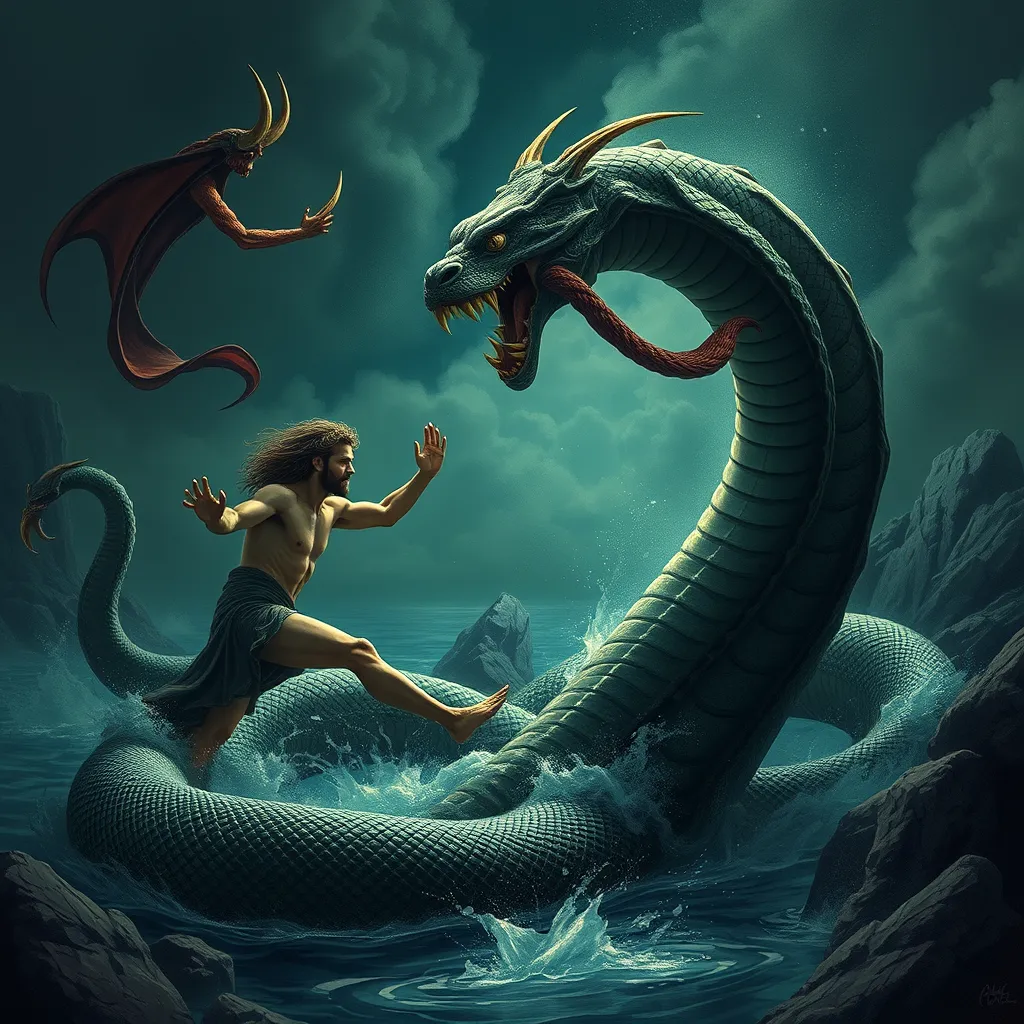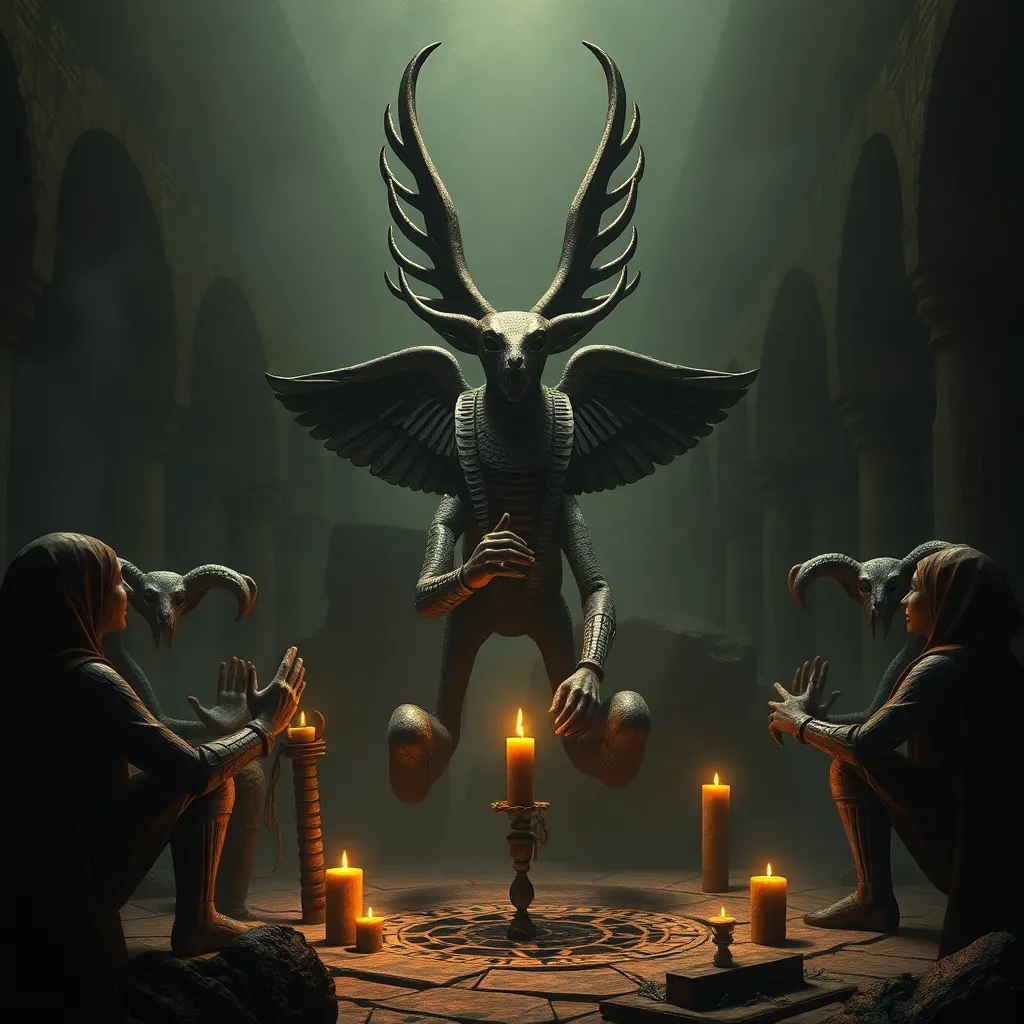Slaying the Serpent: Heracles and the Hydra in Greek Mythology
I. Introduction to Greek Mythology
Greek mythology is a rich tapestry of stories, characters, and themes that have influenced Western culture for centuries. It encompasses a wide array of deities, heroes, and mythical creatures, each with their own unique narratives and significance. These myths were not only a form of entertainment but also served to explain natural phenomena, human behavior, and the mysteries of life and death.
Among the most celebrated figures in Greek mythology is Heracles, known for his immense strength, bravery, and a series of heroic deeds. His adventures, particularly the Twelve Labors, define him as a quintessential hero, showcasing the struggle between human beings and the challenges posed by the divine and the monstrous.
II. The Origins of the Hydra
The Hydra, a fearsome creature from Greek mythology, is often depicted as a multi-headed serpent or dragon. Each time one of its heads was severed, two more would grow in its place, making it a formidable opponent. This regenerative ability symbolizes the idea that some problems are not easily vanquished; instead, they multiply when confronted directly.
According to myth, the Hydra originated from the primordial chaos, a common theme in Greek mythology where monstrous beings emerge from the void. The creature was said to inhabit the swamp of Lerna, an area fraught with danger and mystery. The Hydra is often connected to other myths, particularly those involving the goddess Hera, who sent the creature to challenge Heracles.
In Greek culture, the Hydra represents the challenges and fears that can seem insurmountable. Its many heads symbolize the complexity of problems that arise in life, suggesting that one must be strategic and resourceful in overcoming obstacles.
III. Heracles: The Heroic Context
Heracles, also known by his Roman name Hercules, was born to Alcmene and Zeus, the king of the gods. His divine heritage endowed him with extraordinary strength, but he also faced numerous challenges due to Hera’s jealousy. As a result, he was subjected to a series of trials that tested his limits.
Before confronting the Hydra, Heracles undertook various adventures that showcased his prowess and established his reputation as a hero. These early exploits included slaying the Nemean Lion and capturing the Erymanthian Boar. However, the most significant series of challenges he faced were the Twelve Labors, which were assigned to him as penance for past misdeeds.
- Slaying the Nemean Lion
- Slaying the Lernaean Hydra
- Capturing the Golden Hind of Artemis
- Capturing the Erymanthian Boar
- Cleaning the Augean Stables
- Slaying the Stymphalian Birds
- Capturing the Cretan Bull
- Stealing the Mares of Diomedes
- Obtaining the Girdle of Hippolyta
- Obtaining the Cattle of Geryon
- Fetching the Apples of the Hesperides
- Capturing Cerberus
IV. The Labor of the Hydra
Heracles’ encounter with the Hydra was one of the most notorious of his Twelve Labors. The circumstances leading to this confrontation were dire; the creature was wreaking havoc in Lerna, destroying crops and terrorizing the local population. Heracles was tasked with slaying the Hydra as part of his penance.
The battle between Heracles and the Hydra was fierce and challenging. As he swung his sword to sever one of the heads, he quickly realized that two new heads would sprout in its place. This regenerative ability made the creature nearly invincible and forced Heracles to rethink his strategy.
Heracles was not alone in this endeavor; his nephew Iolaus played a crucial role. After witnessing the regeneration of the heads, Iolaus devised a plan to use fire to cauterize the necks of the Hydra as Heracles cut off each head. This teamwork proved essential in overcoming the monster.
V. The Mythical Techniques and Strategies
Heracles’ use of fire during the battle signifies the importance of innovation and adaptability in the face of overwhelming odds. By preventing the regeneration of the Hydra’s heads, he demonstrated that brute strength alone would not suffice; clever tactics were necessary.
Teamwork also emerged as a significant theme in this myth. The collaboration between Heracles and Iolaus exemplifies the idea that challenges can often be overcome through cooperation and mutual support. Their combined efforts underscore the importance of resourcefulness in mythology.
- Heracles’ physical strength and combat skills
- Iolaus’ strategic thinking and use of fire
- The cooperation between hero and companion
VI. Symbolism and Themes in the Myth
The Hydra serves as a powerful representation of the challenges and fears that individuals face throughout life. Its ability to regenerate highlights the notion that some problems are persistent and multifaceted, requiring more than just simple solutions.
The themes of resilience and transformation are also prevalent in this myth. Heracles’ struggle against the Hydra symbolizes the journey of self-discovery and personal growth that often accompanies overcoming adversity. The battle teaches valuable moral lessons about perseverance, ingenuity, and the importance of seeking help when necessary.
VII. The Legacy of Heracles and the Hydra
The myth of Heracles and the Hydra has left a profound impact on art and literature throughout history. From ancient pottery to Renaissance paintings, this tale has been depicted in numerous forms, illustrating the enduring allure of Greek mythology.
Modern interpretations and adaptations continue to thrive, with the story of Heracles serving as inspiration for films, novels, and comic books. Contemporary culture often reinterprets these myths, exploring themes of heroism and human struggle in new and innovative ways.
Heracles and the Hydra remain relevant in discussions of bravery, resilience, and the human condition, resonating with audiences across generations.
VIII. Conclusion
In conclusion, Heracles’ confrontation with the Hydra is a compelling narrative that encapsulates the essence of Greek mythology. It highlights the hero’s journey, portraying the struggle against seemingly insurmountable odds and the importance of collaboration and ingenuity.
The enduring nature of these myths reflects their capacity to convey universal truths about human experience. As we navigate our own challenges, the lessons drawn from Heracles and the Hydra continue to resonate, reminding us of the strength found in perseverance and the transformative power of facing our fears.



